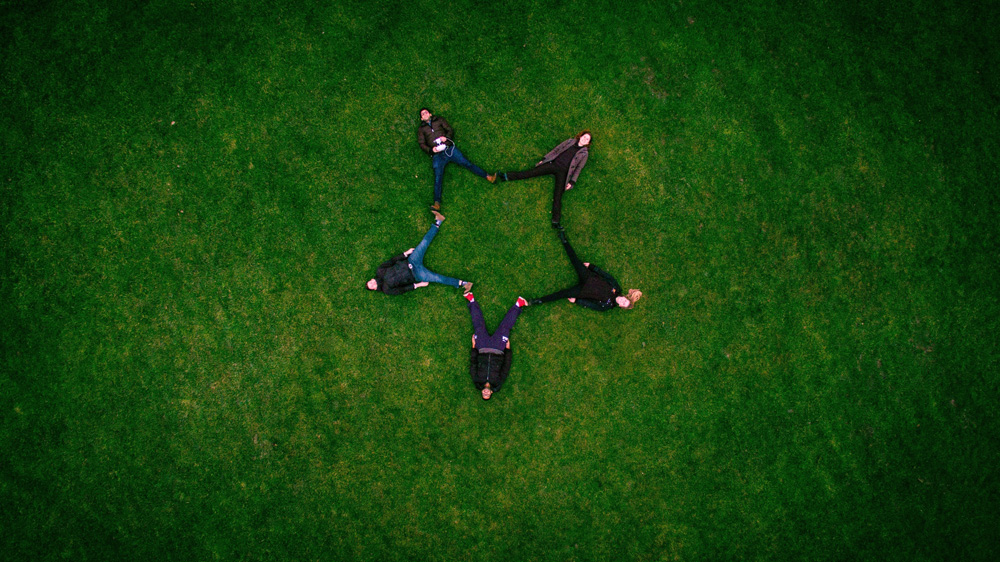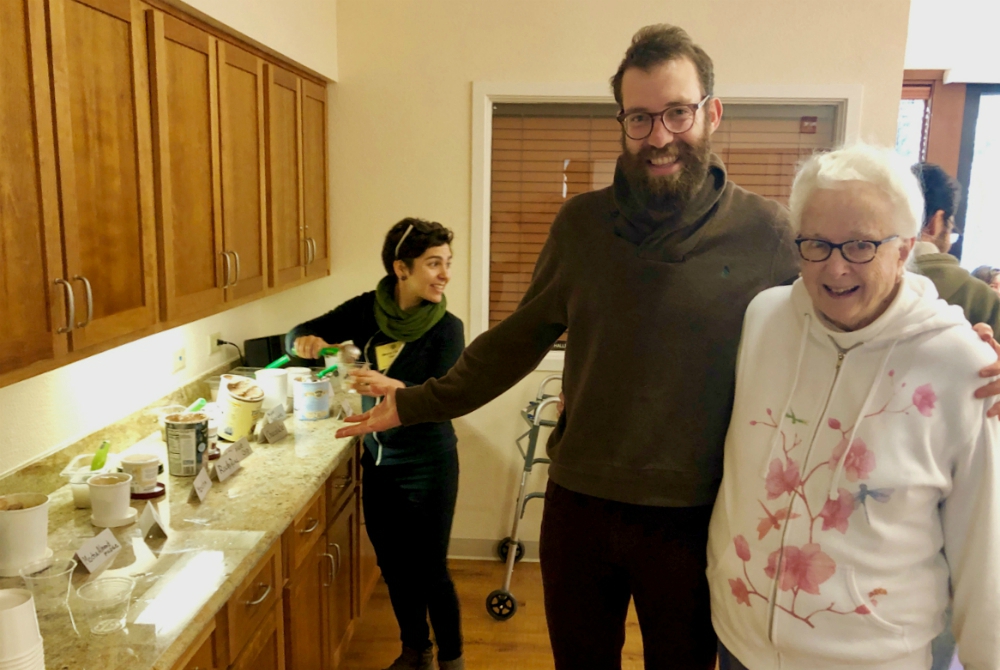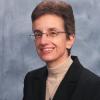
(Unsplash/Sidharth Bhatia)
Editor's note: This is a companion piece to the column by Ilia Delio that was posted the week of the 16th.
Research on posthumanism shows that the autonomous liberal subject is giving way to a new hybridized person, the "posthuman." How does this affect religious life?
In an earlier column I discussed the age ("first axial consciousness") in which the individual and world religions emerged — and the age in which religious life as we have known it grew up. However, we are at the beginning of a new age, what Ewert Cousins and Thomas Berry called "second axial consciousness."
This shift in consciousness has sped up in the last fifty years due to computer technology and the internet and we see signs of it all around us: gender plurality, interspirituality, ecological awareness, socially just communities. The posthuman of second axial consciousness is oriented toward the collective, the ecological and the communal. Baby boomers are of first axial consciousness; Gen Z are primarily of second axial consciousness. These terms are not meant to be historically precise nor can these large shifts in consciousness be adequately defined; however, they provide contexts of meaning.
We do not think in terms of evolution and we treat the human person as a given, as if we have always been individual persons — but personhood is a creative process shaped by environment, culture, history and shifting lines of consciousness. Beatrice Bruteau wrote that a person is "the creative activity of life as it projects itself to the next instant." Since the 1990s, consciousness has shifted according to the predominant lines of electronic information. The human person is being rewired to think across horizontal lines of relationship, not as individual to individual but as interbeings, part of a system of informational flow.
If personhood is defined in and through relationships, the posthuman is the epitome of relationality. John Johnston suggests that the term "human" may come "to be understood less as the defining property of a species or individual and more as a value distributed throughout human-constructed environments, technologies, institutions and social collectivities."
The term "posthuman" describes a material-informational entity whose boundaries undergo continuous construction and reconstruction. In the posthuman, the distributed cognition of the human subject correlates with the distributed cognitive system as a whole in which "thinking" is done by both human and nonhuman actors. Hence, the liberal subject's ability to conceptualize oneself as autonomous being exercising one's will through individual agency and choice, gives way to distributed personhood where conscious agency is never fully in control.
According to Katherine Hayles, author of How We Became Posthuman: Virtual Bodies in Cybernetics, Literature, and Informatics, a new humanism is developing directly at the borderline of simulation and materiality. In her perspective, the scientific language of complexity theory — dissipative structures, fluidities, porous boundaries, and bifurcations — forms the constitutive principles of a new humanism enabled by the regime of computation.
The grammar of the body is shifting from exclusive concern with questions of sexual normativity and gendered identity to a creative interrogation of what happens to questions of consciousness, sexuality, power and culture in a computational culture, in which the code moves from the visible to the invisible, from a history of tools and prosthetics external to the body to a language of simulation fully internal to identity formation.
The posthuman is no longer the liberal subject of modernity — living from a will to power — but the person who now lives from the splice, that is, the interbiological space between biology and machine/device. The logic of human personhood is no longer a simple binary logic but a complexified logic of relationships that provides a creative space of engagement. One lives not in a binary mode (me and you) but in the creative space of interrelatedness (me and you.) The narrative of becoming is consonant with a new ontology of relationship whereby the movement of being itself is a decentering and reforming one that leads to novel form.
Posthuman life is giving rise to a new sense of community. The posthuman does not simply live in community; rather, community is an ongoing construction of personal identity; hence it is an open, fluid, dynamic process of ongoing relationships. When "nones" (shorthand for those who don't practice a specific religion) are talking to nuns it looks like the same types of persons are in conversation, but I think there are different types of relational logic at work. Nones are processing the conversations in a different way from the nuns. They are looking for a new space of shared meaning, a space of creative identity.
The posthuman is no longer the liberal subject of modernity — living from a will to power — but the person who now lives from the splice, that is, the interbiological space between biology and machine/device. The logic of human personhood is no longer a simple binary logic but a complexified logic of relationships that provides a creative space of engagement. One lives not in a binary mode (me and you) but in the creative space of interrelatedness (me and you.) The narrative of becoming is consonant with a new ontology of relationship whereby the movement of being itself is a decentering and reforming one that leads to novel form.

David Bronstein, a millennial participating in the Nuns and Nones residency program, with Mercy Sr. Marguerite Buchanan at an ice cream social at Mercy Center in Burlingame, California (Provided photo)
Posthuman life is giving rise to a new sense of community. The posthuman does not simply live in community; rather, community is an ongoing construction of personal identity; hence it is an open, fluid, dynamic process of ongoing relationships. When "nones" (shorthand for those who don't practice a specific religion) are talking to nuns it looks like the same types of persons are in conversation, but I think there are different types of relational logic at work. Nones are processing the conversations in a different way from the nuns. They are looking for a new space of shared meaning, a space of creative identity.
Posthumans live in a dynamic flow of shared information; personhood is formed through relationships — which is why social justice work is so attractive. The call to build a sustainable and just world is a call to construct one's identity, a life of meaning and purpose, in a culture of algorithms and consumerism. Community cannot be a closed, bounded system but is an ongoing construction of relationships open to the environment.
Nones are seeking terrestrian life and so too are many religious women and men. A number of communities have made ecological commitments and this is a step closer to the liberation of Christian life. Yet taking a stance toward the environment is not the same as belonging to the community of the earth, terrestrian life. Jesuit Fr. Pierre Teilhard de Chardin coined the term "terrestrian" to describe one who lives on a higher consciousness of belonging to the whole, and thus is part of the process of planetization.
A terrestrian is one whose primary community is the earth and who responds in love by giving voice with other terrestrian humans in the praise and glory of God. If God is loving the world into its fullness, then Christian life is by definition terrestrian life, which makes religious life committed terrestrian life. Religious life was never meant to be a bounded, closed system or a tribe, but a life lived on a new level of consciousness of belonging to the whole earth, in love with the whole Body of Christ.
Religious life today stands at the crossroads of death and life. Communities are aging and dying out — large institutions are hanging on but cannot last indefinitely. It is time to turn in a whole new direction. What might religious life look like in a post-institutional age? How can we reconceive religious life as committed terrestrians? How can bounded communities become fluid, porous systems of shared meaning, what I might call "sacred hotspots"?
I imagine posthuman religious life like interlocking cybernetic systems — a core dynamic flow of persons who are interspiritual, gender plural and interracial, sharing the challenges of the Gospel life, committed to a new religious energy in the marketplace, and living on the edge of a new world. Nones and nuns can form a new matrix of shared meaning and life; not as two distinct species but a new complexified harmony of energies—from "Nones and Nuns" to "Ones" — elder, younger, gender, racial and religious persons "one-ing" the earth by loving the earth and one another. Nature is a good teacher on how to live as dynamic, open systems.
In the 21st century religious life can be a life of shared energy, a new secular sacred power, a life of being seized by the Spirit and set on fire: "I have come to set the world on fire and how I wish it were already blazing" (Lk 12:49). A number of years ago I came across an idea from the Jesuit Jon Sobrino, to the effect that religious life should not be a "normal" life because it is a decentered life, and must be lived on the edge of conflict and on the edge of tomorrow.
Religious life should not be an exclusive tribe but an inclusive oneness; a life where every form of life can ultimately find a place at the table of shared life. If religious life could say goodbye to Pachomius and reform as complex dynamical systems of ongoing constructive identity, rooted in prayer and the incredible power of God; if it can find its way in posthuman life, then I think the church will find new energy and ignite.
[Ilia Delio, a member of the Franciscan Sisters of Washington, D.C., is the Josephine C. Connelly Endowed Chair in Theology at Villanova University. She is the author of 16 books, including Making All Things New: Catholicity, Cosmology and Consciousness (Orbis Books 2015), and the general editor of the series Catholicity in an Evolving Universe.]
Advertisement







